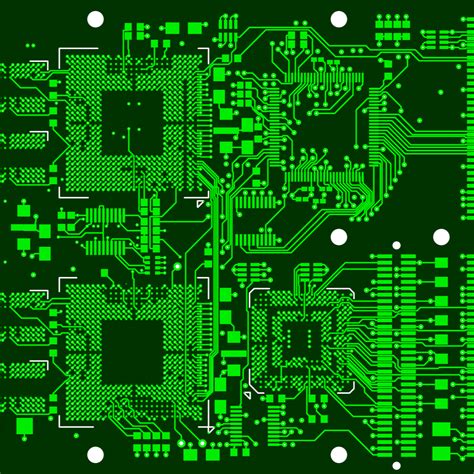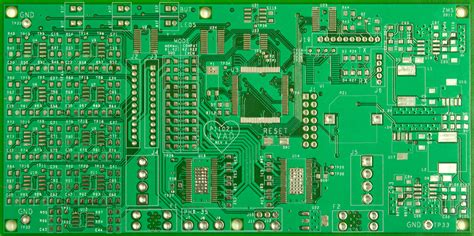Introduction to PCB Design and CAD Software
Printed Circuit board (PCB) design is a crucial aspect of modern electronics manufacturing. It involves the creation of electronic circuits on a flat surface, usually a non-conductive substrate, by connecting various components using conductive traces, pads, and other features. PCB design requires specialized software tools to create, simulate, and optimize the layout of these circuits before they are manufactured.
Computer-Aided Design (CAD) software is a broad category of tools used to create, modify, analyze, and optimize designs across various industries, including electronics, mechanical engineering, and architecture. CAD software allows designers to create precise 2D and 3D models, simulate the behavior of their designs, and generate the necessary files for manufacturing.
The Role of CAD in PCB Design
CAD software plays a vital role in PCB design by providing a digital environment for creating, editing, and analyzing circuit layouts. Some of the key functions of CAD in PCB design include:
- Schematic capture: Creating a visual representation of the electronic circuit, including components and their connections.
- Component placement: Arranging the components on the PCB layout to optimize space, minimize interference, and ensure proper functionality.
- Routing: Connecting the components using conductive traces while adhering to design rules and constraints.
- Design rule checking (DRC): Verifying that the PCB layout meets the specified design rules to ensure manufacturability and reliability.
- Simulation: Analyzing the behavior of the circuit under various conditions to identify potential issues and optimize performance.
Altium: A Comprehensive PCB Design Software
Altium is a leading PCB design software that offers a complete set of tools for creating, simulating, and manufacturing electronic circuits. It is widely used by engineers, designers, and manufacturers across various industries, including consumer electronics, automotive, aerospace, and medical devices.
Key Features of Altium
Altium provides a comprehensive set of features that cover the entire PCB design process, from schematic capture to manufacturing. Some of the key features include:
- Schematic capture: Altium’s schematic editor allows designers to create, edit, and manage electronic schematics with ease. It supports hierarchical design, multi-sheet schematics, and real-time synchronization with the PCB layout.
- PCB layout: Altium’s PCB editor provides a powerful and intuitive environment for creating and editing PCB layouts. It supports advanced routing features, such as interactive routing, differential pair routing, and high-speed design rules.
- 3D visualization: Altium allows designers to view their PCB layouts in 3D, providing a realistic representation of the final product. This helps in identifying potential mechanical issues and optimizing the design for manufacturing.
- Design rule checking: Altium’s built-in design rule checker ensures that the PCB layout meets the specified design rules, such as minimum trace width, clearance, and hole size. This helps in preventing manufacturing issues and improving the overall quality of the design.
- Simulation: Altium provides a range of simulation tools, including signal integrity analysis, power integrity analysis, and electromagnetic compatibility (EMC) analysis. These tools help designers optimize their designs for high-speed applications and ensure compliance with industry standards.
Comparing Altium with Other PCB Design Software
| Software | Schematic Capture | PCB Layout | 3D Visualization | Design Rule Checking | Simulation |
|---|---|---|---|---|---|
| Altium | ✓ | ✓ | ✓ | ✓ | ✓ |
| KiCad | ✓ | ✓ | ✓ | ✓ | ✓ |
| Eagle | ✓ | ✓ | ✓ | ✓ | ✗ |
| OrCAD | ✓ | ✓ | ✗ | ✓ | ✓ |
While there are several other PCB design software available in the market, such as KiCad, Eagle, and OrCAD, Altium stands out for its comprehensive feature set and seamless integration between schematic capture, PCB layout, and simulation tools. This makes Altium a preferred choice for many professionals involved in complex PCB design projects.

Is Altium Considered CAD?
Given the features and capabilities of Altium, it is clear that it falls under the category of CAD software. Altium provides a complete set of tools for creating, editing, and analyzing PCB designs, which are the core functions of CAD software in the electronics industry.
Altium as a CAD Tool for PCB Design
Altium’s schematic capture, PCB layout, and 3D visualization features are similar to those found in other CAD software used in mechanical engineering and architecture. These features allow designers to create precise digital models of their PCB designs, optimize the layout for manufacturing, and visualize the final product in 3D.
Furthermore, Altium’s design rule checking and simulation capabilities are essential for ensuring the manufacturability and reliability of PCB designs. These features are analogous to the analysis and optimization tools found in other CAD software, such as finite element analysis (FEA) in mechanical engineering.
The Benefits of Using Altium as a CAD Tool
Using Altium as a CAD tool for PCB design offers several benefits, including:
- Improved design accuracy: Altium’s precise modeling and simulation tools help designers create accurate PCB layouts that meet the specified design rules and constraints.
- Faster time-to-market: Altium’s seamless integration between schematic capture, PCB layout, and simulation tools streamlines the design process, reducing the time required to bring a product to market.
- Reduced manufacturing costs: By optimizing PCB layouts for manufacturability and identifying potential issues early in the design process, Altium helps reduce manufacturing costs and improve overall product quality.
- Enhanced collaboration: Altium’s cloud-based platform, Altium 365, enables real-time collaboration between designers, manufacturers, and other stakeholders, improving communication and reducing the risk of errors.

Frequently Asked Questions (FAQ)
1. Is Altium only used for PCB design, or can it be used for other types of CAD?
Altium is primarily used for PCB design and is not typically used for other types of CAD, such as mechanical or architectural design. However, Altium does offer some tools for creating and importing 3D models of components and enclosures, which can be useful for visualizing the final product and ensuring proper fit.
2. Can Altium import and export files from other CAD software?
Yes, Altium supports a wide range of file formats for importing and exporting data, including:
- Schematic files: Altium Designer Schematic (.SchDoc), OrCAD Capture (.DSN), PADS Logic (.asc), and more.
- PCB files: Altium Designer PCB (.PcbDoc), Gerber (.gbr), ODB++ (.tgz), and more.
- CAD files: STEP (.stp, .step), IGES (.igs, .iges), DXF (.dxf), and more.
This allows designers to collaborate with others who may be using different CAD software and ensures compatibility with manufacturing processes.
3. Is Altium suitable for beginners, or is it only for experienced PCB designers?
Altium is a powerful and comprehensive PCB design software that may have a steeper learning curve compared to some other entry-level tools. However, Altium offers extensive documentation, tutorials, and support resources to help users get started and master the software. Many universities and training programs also use Altium as part of their curriculum, which can help beginners gain the necessary skills and knowledge to use the software effectively.
4. How does Altium compare to other PCB design software in terms of price?
Altium is generally considered a premium PCB design software and may have a higher price point compared to some other tools in the market. However, the cost of Altium should be weighed against its comprehensive feature set, reliability, and the potential benefits it offers in terms of design accuracy, time-to-market, and manufacturing cost savings. Additionally, Altium offers various licensing options, including subscription-based and perpetual licenses, which can be tailored to the needs and budget of different organizations.
5. Can Altium be used for high-speed PCB design?
Yes, Altium is well-suited for high-speed PCB design. It offers a range of features and tools specifically designed to address the challenges of high-speed design, such as:
- Controlled impedance routing
- Differential pair routing
- Length matching and tuning
- Signal integrity analysis
- Electromagnetic compatibility (EMC) analysis
These features help designers optimize their PCB layouts for high-speed applications, minimize signal integrity issues, and ensure compliance with industry standards.

Conclusion
In conclusion, Altium is indeed considered a CAD software for PCB design. Its comprehensive set of tools for schematic capture, PCB layout, 3D visualization, design rule checking, and simulation make it a powerful and reliable choice for professionals involved in electronic product development.
As a CAD tool, Altium offers significant benefits, including improved design accuracy, faster time-to-market, reduced manufacturing costs, and enhanced collaboration. While it may have a steeper learning curve compared to some entry-level PCB design software, Altium’s extensive resources and widespread use in industry and academia make it an accessible and valuable tool for both beginners and experienced designers.
When choosing a PCB design software, it is essential to consider factors such as the complexity of the projects, the required features, the available budget, and the existing skills and knowledge of the design team. For those seeking a comprehensive, reliable, and industry-standard CAD tool for PCB design, Altium is a strong contender that offers a wide range of benefits and capabilities.

Leave a Reply